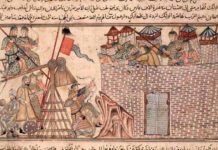Despite Vietnam’s declaration of independence after World War II, it was thirty years later before it was finally free of foreign influence upon reunification in 1975.
Vietnam’s history from 1945 to 1975 was marked by conflicts, confusion and foreign involvement, and it arguably underwent a more difficult path to independence than other Southeast Asian countries such as the Philippines.
Eve of World War II
Towards 1945, Vietnam was in a state of chaos. Not only was there poverty and famine due to wartime disruptions, governance was also in a state of flux, with the eminent withdrawal of the Japanese forces, the interning of the French who had previously been the ruling powers, and the recent establishment of a Vietnamese government under emperor Bao Dai.
Viet Minh forces led by Ho Chi Minh took the chance to seize control during this period of disarray, taking control of Northern and Central Vietnam immediately after Japanese surrender. Ho Chi Minh declared Vietnam’s independence from Hanoi on 2nd September.
Nevertheless, the Allies intervened with the deployment of Chinese forces to control the North and the eventual reestablishment of French military in the South.
Ho Chi Minh managed to negotiate for the Chinese to leave in 1946, but was unable to achieve peaceful decolonization from the French. Fighting broke out, and it was only in 1954, with the Viet Minh’s landmark victory over the French at the battle of Dien Bien Phu, that there was a ceasefire for the Geneva conference.
Partitioning of Vietnam
After the 1954 Geneva conference, Vietnam was split at the 17th parallel, the North to be governed by Ho Chi Minh and the South by Bao Dai. Elections for a reunified government were supposed to be in 1956, but they never took place as Ngo Dinh Diem, who seized power as President of the South from Bao Dai, refused to consider democracy. Indeed, Diem’s governance built resentment in many ways, protests most prominent with Buddhist monks burning themselves to death in the streets. He was eventually murdered in 1963.
In contrast, Ho Chi Minh’s government enjoyed popular support for their socialist agenda, although the successes of their policies such as land reform in 1956 were questionable. In response to Diem’s rule, the communist supported National Liberation Front (NLF), better known as the Vietcong, was established in 1960, which appealed to Vietnamese patriotism and morality.
The US response was to send in American aid and forces, and the armed conflicts eventually grew into what was known as the Vietnam War. American involvement only reduced after the Tet offensive of the NLF forces in 1968, with the gradual withdrawal of American troops and increased diplomatic efforts.
Towards Reunification in 1975
The Paris peace talks, which began in 1968, called for a ceasefire, and also addressed more fundamental issues such as the recognition of Vietnam’s independence.
Within the country, however, developments were grittier. Enforced by the legitimacy given to them by the Paris talks, the North was starting to match up to the South in terms of military might, moving from guerilla warfare to conventional tactics. The South was also weakened by corruption in President Thieu’s government. In March 1975, forces from the North attacked the South. The Southern government yielded quickly, and the forces entering Saigon on 30th April marked the reunification of Vietnam and end of foreign interference.
Challenges after Vietnamese Independence
After 1975, multiple challenges still confronted Vietnam. The new government tackled these issues with the spirit of a communist military campaign. However, their measures in retrospect could be considered rather unsuccessful:
Their command economy and agricultural collectivization policies failed to provide either wealth or resources for the people.
The spatial engineering which reconfigured Vietnamese province boundaries marginalized ethnic minorities living in mountainous regions such as the Hmong and Tai, among other negative repurcussions.
Significance of Vietnam’s Path to Independence
From a historical standpoint, Vietnam’s path to independence presents the difficulties faced by Southeast Asian countries both in the immediate years before and after independence.
On another note, this period of Vietnamese history is well represented in culture and entertainment, such as the musical Miss Saigon or the movie Apocalypse Now. This could show a fascination towards the period even within the greater public consciousness.
Bibliography:
- A Short History of South-east Asia (3rd edition) by Peter Church (published 2003)
- The Emergence of Modern Southeast Asia Edited by Normal G. Owen et al. (published 2005)








